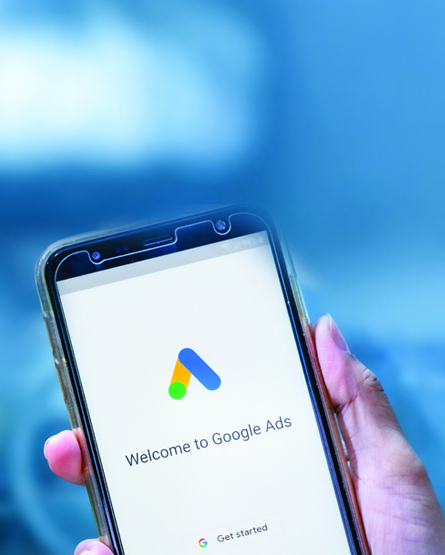I hope you enjoy reading this blog post.
If you want to get more traffic, Contact Us

Click Here - Free 30-Minute Strategy Session
Be quick! FREE spots are almost gone for this Month. Free Quote

Conversion optimisation in Google Ads focuses on ensuring that ad clicks translate into meaningful actions such as purchases, sign-ups, or inquiries. It bridges the gap between traffic generation and actionable results, maximising the return on investment (ROI). Businesses must analyse user behaviour on landing pages, aligning ad copy, keywords, and design to match audience intent.
Key elements include:

Click Here – Free 30-Minute Strategy Session
Be quick! FREE spots are almost gone for this Month
Effective optimisation helps businesses refine strategies, ensuring resources drive measurable growth.
Determining clear objectives is essential for creating a high-performing Google Ads campaign. Advertisers must define what success looks like, whether it is increasing website traffic, boosting conversions, raising brand awareness, or improving return on ad spend (ROAS).
Setting measurable, precise goals provides direction and facilitates meaningful performance tracking throughout the campaign.
Effective keyword research forms the cornerstone of a successful Google Ads campaign. By identifying high-performing keywords tailored to the target audience, advertisers can drive clicks and secure better conversions. Tools such as Google Keyword Planner enable detailed analysis of search volumes, competition levels, and cost-per-click data.
Marketers should segment keywords based on intent into categories like informational, navigational, and transactional. Long-tail keywords are essential to target niche audiences with more specific queries. Competitor analysis can unveil valuable opportunities and hidden keyword gaps. Regularly revising and expanding the keyword list ensures campaigns remain relevant and aligned with market trends.
Crafting engaging ad copy is crucial for maximising the performance of Google Ads. Advertisers should ensure the headlines and descriptions reflect the search intent of their target audience. Using action-oriented language, such as “Discover,” “Save,” or “Get,” encourages users to engage with the ad. Customising ad copy with relevant keywords improves ad relevance scores and visibility.
It is essential to address user pain points clearly while highlighting the unique benefits of the products or services offered. Incorporating emotional triggers or urgency phrases, such as “Limited Time Offer,” can stimulate action. Testing multiple variations helps to identify the highest-performing copy across campaigns.
Audience targeting in Google Ads offers marketers the ability to reach users who are most relevant to their campaigns. By identifying specific demographics, interests, and behaviours, advertisers can ensure their ads resonate with the intended audience.
Consistently refining audience segments can optimise ad relevance, which directly influences click-through rates and conversion rates.
Ad extensions are vital tools for increasing ad performance, offering additional information and boosting visibility. Google Ads provides various extension types, such as:
Implementing ad extensions improves ad relevance and click-through rates. They provide more touchpoints for potential customers, creating a seamless user experience. Strategically selecting extensions that align with campaign goals ensures optimal utilisation. Integration with analytics tools allows performance tracking for continuous optimisation.
Conversion tracking is essential for measuring the effectiveness of Google Ads campaigns. By tracking actions like purchases or form submissions, advertisers can pinpoint areas that drive ROI. To implement conversion tracking, start by creating a conversion action within Google Ads. Google provides tracking codes, known as tags, which must be added to the relevant pages of the website. Using tools like Google Tag Manager simplifies the process.
For accuracy, ensure the website supports tag integration and that the codes are placed in the correct location. Regularly test tracking functionality to avoid data discrepancies. Reliable tracking informs optimisation decisions effectively.
A/B testing, also known as split testing, enables advertisers to determine which ad variations perform best by comparing them side-by-side. This method involves creating two or more versions of an ad, altering elements like headlines, descriptions, display URLs, or visuals while keeping other components constant. Google’s platform allows running these tests efficiently across different audiences or time periods.
Advertisers should define a clear metric, such as click-through rates (CTR) or conversion rates, to measure performance. Rotating ads evenly and monitoring results over a statistically significant period ensures accurate insights. Regular A/B testing helps refine ad strategies and boosts overall campaign effectiveness.
Optimising landing pages is crucial to ensuring alignment with the intent behind ad campaigns. A cohesive message between ads and their corresponding landing pages can significantly reduce bounce rates and improve conversions.
Strategically aligning landing pages with ad intent strengthens user engagement and increases the likelihood of achieving the desired ROI.
Automated bidding strategies within Google Ads harness machine learning to adjust bids and improve campaign performance. Advertisers can choose from various options, including Target CPA, Target ROAS, or Maximise Conversions, based on their business goals. Understanding the nuances of each strategy is crucial to avoid overspending or underperforming.
Fine-tuning these strategies ensures automated bidding serves as a valuable tool rather than a risk to ROI.
Regularly analysing campaign data allows advertisers to identify trends, measure performance, and adjust strategies accordingly. Metrics such as click-through rates (CTR), cost-per-click (CPC), and conversion rates provide valuable insights into the effectiveness of ads. By leveraging segmentation, one can determine which audience groups drive the most conversions.
A/B testing plays a critical role in refining ad copy, keywords, and landing pages. Negative keyword analysis helps eliminate wasteful spending, ensuring budgets focus only on relevant searches. Automation tools, like bidding strategies, further enhance campaign precision.
Reviewing analytics reports consistently helps refine targeting, improve ad quality, and maximise return on investment (ROI) efficiently.
To achieve optimal results with Google Ads, it is crucial to avoid frequent errors that can harm campaign performance.
Recognising and addressing these pitfalls can maximise ad efficiency.
Remarketing campaigns allow advertisers to reconnect with users who have previously interacted with their website or ads. By targeting this audience, businesses can maximise their chances of conversions.
Remarketing capitalises on existing interest, keeps a brand top-of-mind, and encourages users to complete desired actions like purchases or sign-ups.
Staying abreast of Google Ads updates and evolving trends is pivotal for campaign optimisation. Google frequently introduces platform changes, algorithm updates, and new ad formats, which can drastically impact campaign performance. Marketers should monitor official announcements via Google Ads’ blog or forum to ensure immediate adoption of these changes.
Adapting campaigns in line with trends like automation or privacy-focused targeting enhances relevance and improves return on investment. Knowledge is key.

LEAVE A REPLY